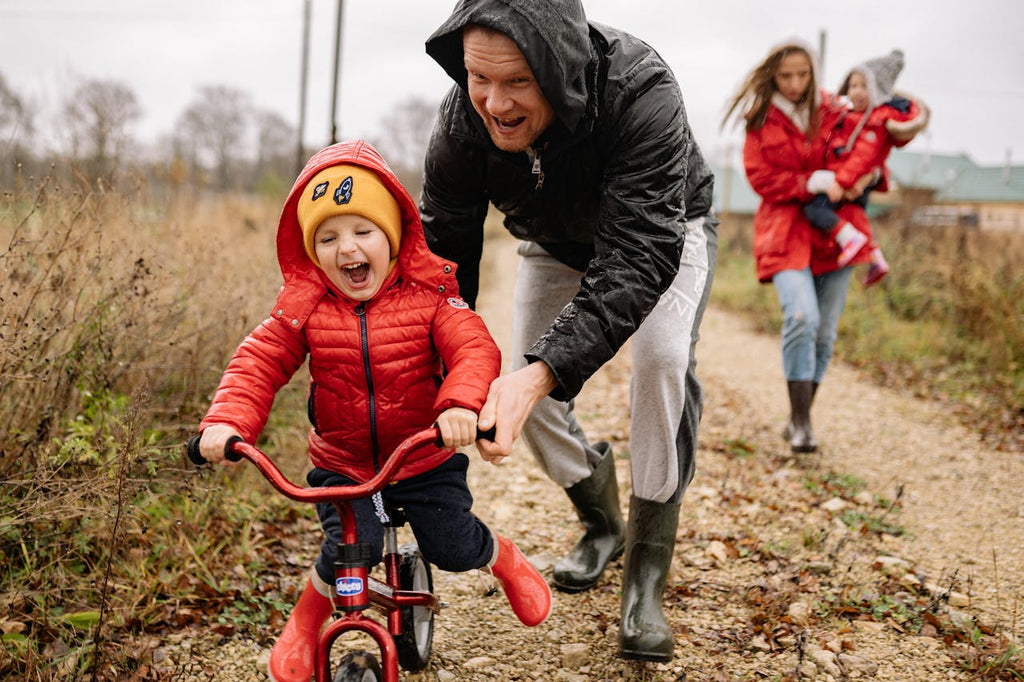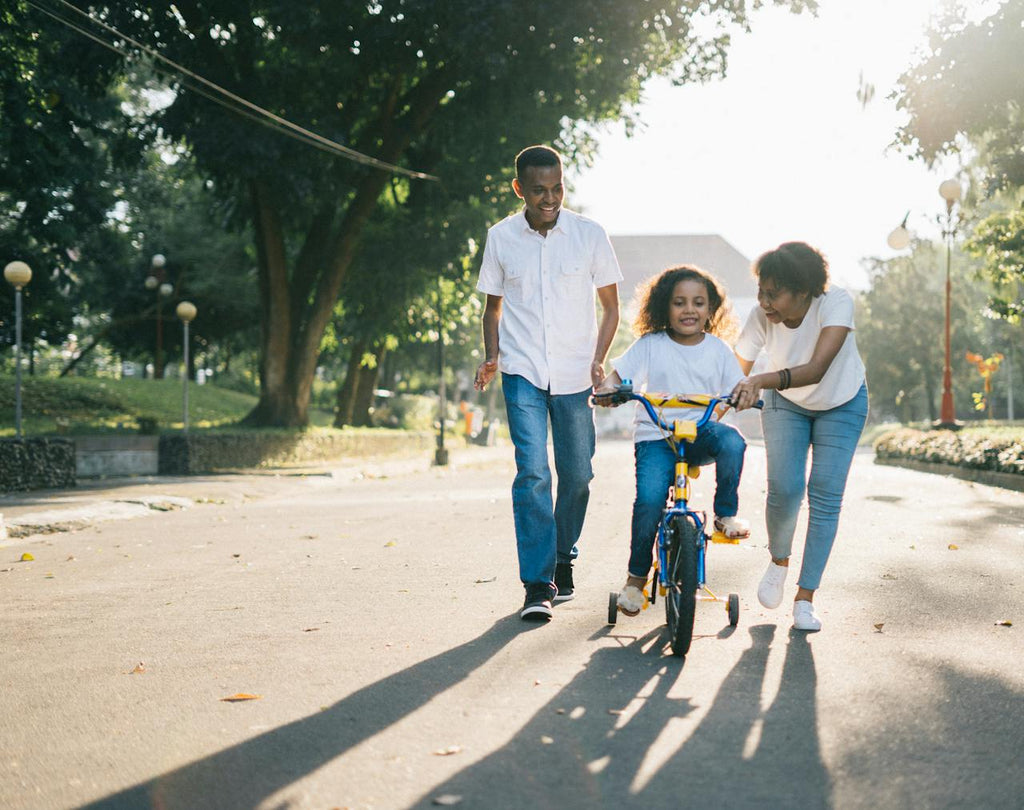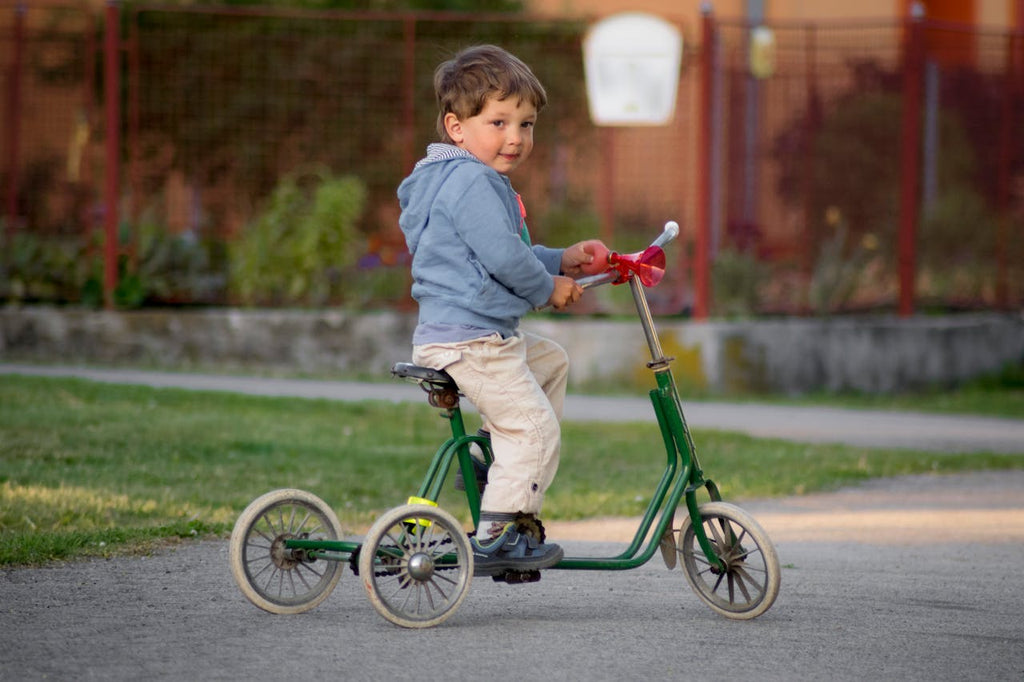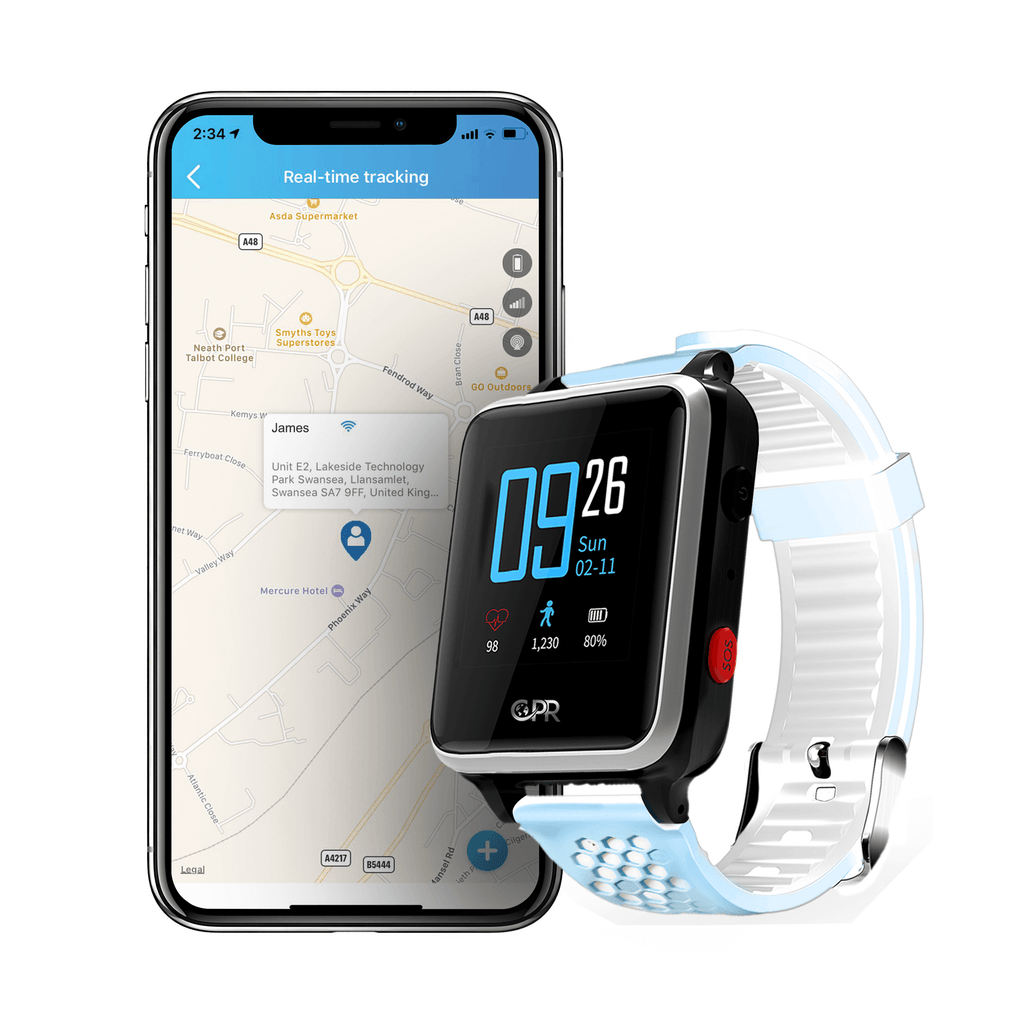As parents, ensuring the safety of our children is always a top priority. When it comes to biking, instilling proper safety measures is paramount to keeping our little ones safe and secure on the roads. In this comprehensive guide, we'll dive into essential tips and practices to ensure bike safety for kids, providing you with peace of mind as they pedal their way through childhood adventures.

Proper Helmet Fit
Ensuring that your child wears a helmet every time they ride is non-negotiable. But simply having a helmet isn't enough; it must fit correctly to provide optimal protection.
The helmet should sit level on your child's head, covering their forehead and not tilting backwards or forward. Adjust the straps snugly under the chin, with only enough room for one or two fingers to fit between the strap and the chin.
Choosing the Right Bike Size
A bike that's too big or too small can pose significant safety risks for your child. When selecting a bike, ensure that your child can straddle the bike with both feet flat on the ground and comfortably reach the handlebars and pedals. Avoid the temptation to buy a bike that your child will "grow into," as an ill-fitting bike can hinder their ability to control it effectively.
Teaching Traffic Rules and Signaling
Even young cyclists can benefit from understanding basic traffic rules and hand signals. Teach your child to always ride on the right side of the road, in the same direction as traffic, and to obey stop signs and traffic lights. Additionally, practice hand signals with them so they can communicate their intentions to motorists effectively.
Supervised Practice Sessions
Before allowing your child to ride independently, start with supervised practice sessions in a safe, controlled environment such as an empty parking lot or a quiet street. Use these sessions to teach them essential skills like starting and stopping, steering, and scanning for obstacles.

Setting Boundaries and Rules
Establish clear boundaries for where your child can ride and enforce rules such as always wearing a helmet, staying within sight, and seeking permission before venturing out. As they grow more confident and skilled, gradually expand their riding area, but continue to emphasise the importance of safety.
Regular Maintenance Checks
A well-maintained bike is crucial for safe riding. Teach your child basic maintenance tasks like checking tyre pressure, ensuring brakes are working correctly, and inspecting for any loose or damaged parts. Make it a habit to perform these checks together regularly.
Riding in Safe Locations
Encourage your child to ride in designated bike lanes, parks, or residential areas with low traffic. Avoid busy streets or areas with heavy congestion, as these can increase the risk of accidents. By choosing safe riding locations, you provide your child with a conducive environment to practice their biking skills without unnecessary hazards.

Practicing Emergency Maneuvers
Teach your child how to react in emergencies, such as encountering obstacles or sudden stops. Practice emergency manoeuvres like braking quickly and swerving to avoid hazards. Instilling these reflexes early on can help your child navigate unexpected situations with confidence and minimise the risk of accidents.
Leading by Example
As a parent, you serve as a role model for your child's behaviour, including bike safety practices. Always wear your helmet when riding with your child, obey traffic laws, and demonstrate safe riding behaviours. By leading by example, you reinforce the importance of bike safety and instil good habits that your child will emulate.
Continuous Education and Reinforcement
Bike safety is an ongoing process that requires continuous education and reinforcement. Stay updated on the latest safety guidelines and regulations, and regularly discuss bike safety with your child. Use opportunities like family bike rides or community events to reinforce safety practices and address any questions or concerns your child may have.

Conclusion
Bike Safety for Kids is about more than just protective gear and traffic rules; it's about empowering our children to be responsible and confident cyclists. By instilling good habits from an early age and leading by example, we can ensure that biking remains a fun and safe activity for our little ones. So, gear up, buckle those helmets, and let's hit the road with confidence, knowing that our children are equipped with the knowledge and skills to ride safely.
Bike Safety for Kids is a shared responsibility between parents and children. By prioritising education, supervision, and proper equipment, we can create a culture of safety that allows our kids to enjoy the freedom and joy of biking while minimising risks. Together, let's pave the way for a future where every bike ride is a safe adventure.
Please browse our products or contact us if you need assistance.
